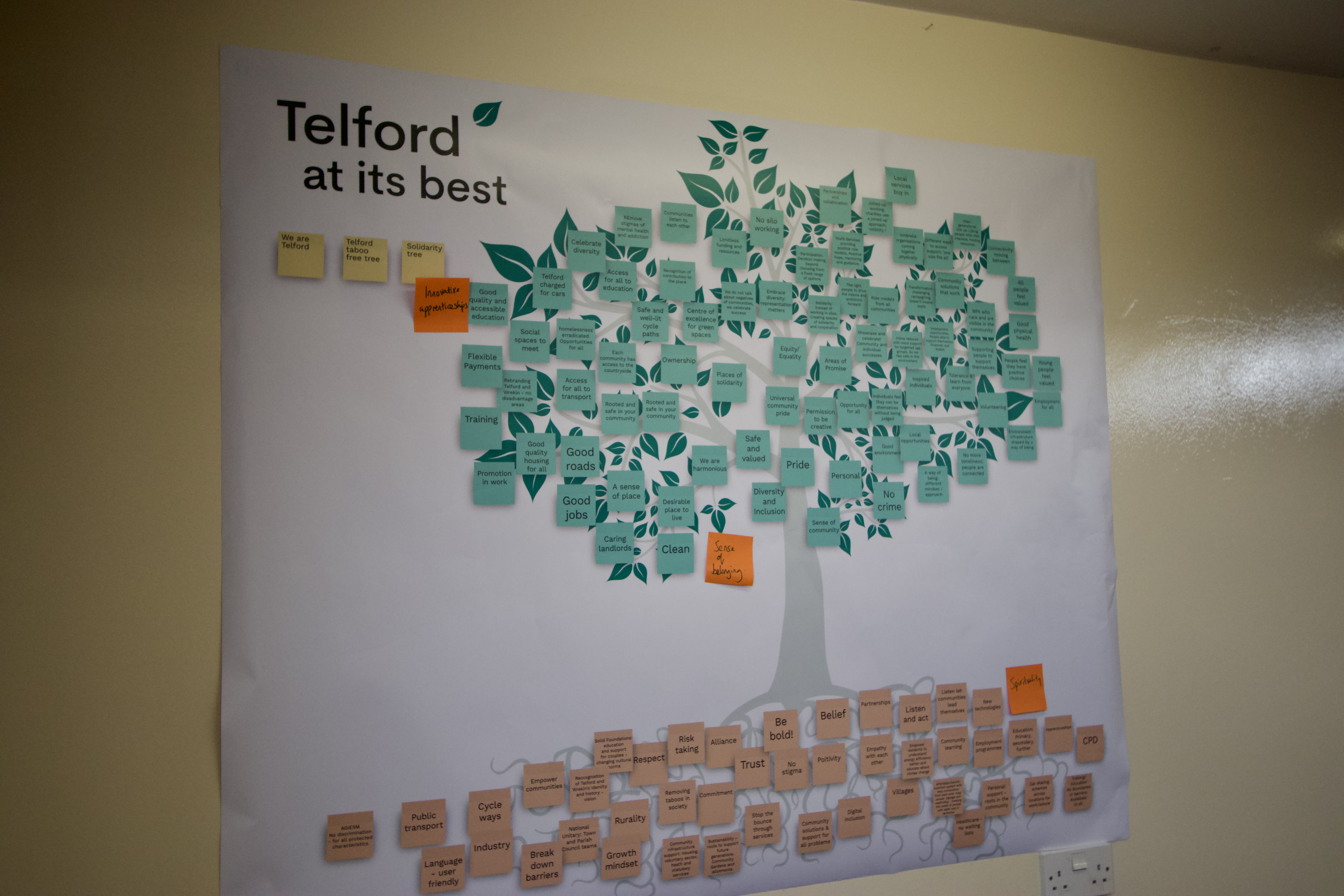You cannot go it alone
Ann Johnson, Local Implementation Lead in Telford and Wrekin, writes how collaboration needs to harness a variety of diverse voices.
01 November 2022
Ann Johnson, Local Implementation Lead in Telford and Wrekin, writes how collaboration needs to harness a variety of diverse voices.
01 November 2022
Ann Johnson is the Local Implementation Lead in Telford and Wrekin as part of the Foundation’s People and Communities work. As part of this, Ann works with the local community in Telford to increase aspirations and potential in the borough. Ann is the founder of Wave-length Social Marketing CIC and a Fellow of the School of Social Entrepreneurs.
Collaboration brings together the joining of minds, assets and understanding, providing new dynamic ways of working, both on a micro level and community-wide activities.
My role provides an opportunity for me to work with a breadth of partners from voluntary, public, business and importantly, the people within the community, to collaborate and achieve change on issues that matter most to everyone involved. We work together to find new ways of using the existing strengths and resources in a community.
Seeing each person or organisation involved as a contributor - and not someone or a group to simply consult with or inform of progress - is not just about responding to a crisis, or a societal need, but it’s about changing mindsets and behaviours to one of collective thinking, approaches that bring about change in both the short-term and long-term. In essence, it’s about a collaboration of differences, ideas, assets, knowledge and perspectives.

Ann Johnson, Local Implementation Lead for Telford and Wrekin
Recently in Telford, we had several organisations working to reduce the cost of school uniform purchase or replacement. Everyone was working in isolation; be that setting up swaps in local schools, calling out for uniforms by the crisis centre, working with local retailers to reduce the costs of uniforms, or trawling the charity shops for uniforms to repair and adjust.
All these groups had something to offer with their mixed skills reach, and distribution offer. But in working alone, they all had components missing, resulting in limited impact, and only reaching people who identified as in crisis or were already known to the system.
If groups came together they could have created a far-reaching approach for everyone, now and in the future. This is just one example of a larger, more complex and deeply ingrained system.
The universal issue we found in Telford was that nearly all organisations were working in crisis mode and not tackling the root causes or opportunities to change outcomes. For example, several charities that supported people at risk of being homeless knew that improving life choices, and opportunities and providing better housing would improve people’s lives. But as a charity, they were caught up in the immediate need for food distribution and keeping warm the people who were currently homeless.
COVID 19 certainly provided the space to demonstrate a new way of collaborative working. In Telford, charities, voluntary groups, and community centres were being asked by funders and commissioners, ‘what do you and your community need and how can we help meet this need?’ It provided an opportunity to stop and do things differently.
We held a series of workshops for people to find a starting point and common vision. One commissioner said that she recognised the need to talk about change but currently she could only give about 10% of her time to do it, the other 90% was dealing with the consequences of not achieving change.

The most engaging, inclusive, and creative session we have had so far was an event where 40 people came together to create a vision for Telford at its best. Everyone worked together to identify what could be achieved and what’s needed to achieve this. The great thing about this activity was that it involved everyone and it freed people up from their roles, and many of the participants took away the outcome of this exercise which will help inform the local authorities' next business plan.
Funders need to understand that real change is not always about finding new projects, it is about strengthening communities, looking at and understanding the core needs of local people, seeing places as unique, and encouraging local partnerships and collaborations with local people who will be impacted by change – or lack of.
To make this work, funders need to trust the process and encourage spaces where people can detach from their roles and become part of the conversation. This includes being open to different perceptions, working with others, and hearing the diversity of ideas. Otherwise, we run the risk of being driven by the results of a consultation and not true collaboration; or only hearing the loudest voices in a space, whether they are those with financial assets or those with powerful voices from the voluntary sector.
These strong voices of course are necessary as they are often the drivers of immediate change, but the people who stand for change can get exhausted.
So instead, this collaborative way of working needs to harness a variety of diverse voices and minds to achieve sustained change - one that all the community can see and sense; and one that provides wider involvement of small charities, businesses and groups; and one that works to make real change happen.
On 3rd October 2022 we hosted an event to share our learning from the last five years of our funding practice. We received some great questions from the audience at this event which we've answered
Read more
"Collaboration multiplies the ways that funders can achieve a positive impact" Jim Cooke, Funders Collaborative Hub
Read more
Bonnie Chiu and Ngozi Lyn Cole reflect on the Foundation's racial equity journey, two years on.
Read more